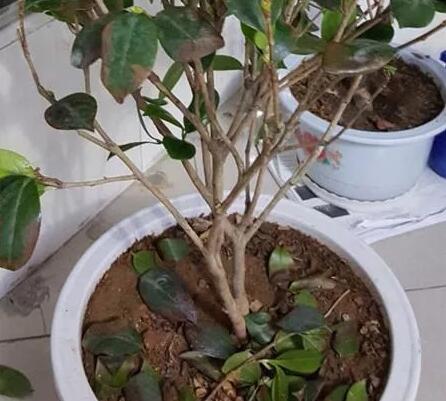What are the main pests and physiological diseases of bayberry? What are the technical points of prevention and control?
Red bayberry is a special fruit tree in China, which is favored by consumers because of its unique fruit flavor and rich nutrition. But there are many aspects that should be paid attention to in the cultivation of red bayberry, so what are the main insect pests and physiological diseases of red bayberry? What are the key points of prevention and control techniques?
What are the main insect pests and physiological diseases of red bayberry?
1. Insect pests: Drosophila, leaf roll moth, night moth, shell insects and so on.
2. Diseases: White rot, shoot blight, leaf spot, red clothes disease, etc.
Second, how to control diseases and insect pests of red bayberry?
1. Chemical control
The main results are as follows: (1) clear the garden in winter, brush the trunk and main branches of red bayberry with whitening agent, and spray the trunk, branches and ground with stone sulfur mixture.
(2) Drosophila melanogaster can choose 60 g / L ethyl spinosad, spray 15 days before fruit color conversion to maturity, or 0.1% avermectin concentrated bait is diluted 2-3 times and then loaded into trapping pot, 20 cans / mu.
(3) scale insects, you can choose 95% mineral oil EC or 30% sodium turpentine water emulsion. From July to August, the second generation of scale insects occurred at the initial stage, or the garden was cleared in winter and sprayed. High temperature season should be used in the morning or evening to avoid high temperature, and increase the dilution multiple.
(4) for brown spot, 33.5% quinoline copper suspension can be used, spray control after fruit harvest, or clear garden.
Note: the varieties of pesticides prohibited on bayberry are:
BHC, DDT, toxaphene, Aldrin, dieldrin, herbicide, dibromoethane, chlordimeform, dibutane, dibromochloropropane, mercury preparation, arsenic, lead, fluoroacetamide, tetramine, sodium fluoroacetate, glyphosate, tetramine silicon, methamidophos, methyl parathion, monocrotophos, phosphates, phosphates, parathion, parathion, methyl thiocarbophos, calcium phosphide, magnesium phosphide, zinc phosphates, thiophanes, flies, borers, Terbutathion, chlorosulfuron, methanesulfuron, aminobenzenesulfuron single agent, formearsine, formazomethyl arsine, paraquat, methamidophos, methyl isosalidophos, internal phosphorus uptake, line phosphos, thiocarbophos, chlorazophos, aldicarb, carbofuran, isocarbophos, methomyl, omethoate, methotrexate, parathion, fipronil.
2. Physical and chemical inducement and control
(1) cultivation of shelter from rain in net room
In order to effectively block the harm of all pests such as bayberry and fruit flies and reduce the occurrence of diseases, the net room can be used for rain shelter cultivation. The cultivation of shelter from rain in net room is suitable for orchards with good ventilation on hillside and hillside or easily affected by wind damage. The net room facilities had better choose hot-dip galvanized steel pipe, surrounded by insect-proof net, the top is covered with special plastic film with good light transmittance, and the top of the shed is more than 80 centimeters above the top of the tree. Cover the insect control net 40-50 days before harvest (before the red bayberry flies enter the garden), cover the roof 10 days before harvest to protect against rain, and remove it in time after harvest. After the net is covered, all pesticides and nutrient solutions will be stopped in the orchard until the net is removed after the bayberry harvest.
(2) Yellow board trap
The adult fruit fly was killed by using the color trapping characteristic of Drosophila melanogaster. Before the red bayberry was ripe, hang a yellow board on the trunk of the bayberry tree, one for each plant.
(3) trapping by insecticidal lamp
Insecticidal lamp trapping was carried out according to the phototactic habits of adults of pests such as nocturnal moth and leaf curl moth. Install one insecticidal lamp every 30 mu, start at the hard core period of red bayberry, turn on the lights from 19 to 23:00 every night, and stop turning on the lights after fruit picking.
Time: 2019-04-06 Click:
- Prev

Four reasons for the loss of leaves of domestic potted camellias and their solutions
Now Camellia has also become one of the domestic potted plants, in the cultivation of camellias, although there may be nothing unusual on the surface, but gently touch with the hand, its leaves may fall off, camellia leaves how to do? The following is a detailed explanation of the reasons and solutions. Stagnant water led to rotten roots and leaves of camellias.
- Next

What if the lotus bamboo leaves turn yellow? You can try these ways!
Lotus bamboo, also known as Guanyin bamboo and lotus bamboo, is thick and long, evergreen all the year round, graceful stem, chic posture and rich bamboo rhyme, so it is a quite good indoor foliage plant. But people who pass the lotus bamboo know that they are very easy to yellowing leaves, so what about the leaves of the lotus bamboo?
Related
- Fuxing push coffee new agricultural production and marketing class: lack of small-scale processing plants
- Jujube rice field leisure farm deep ploughing Yilan for five years to create a space for organic food and play
- Nongyu Farm-A trial of organic papaya for brave women with advanced technology
- Four points for attention in the prevention and control of diseases and insect pests of edible fungi
- How to add nutrient solution to Edible Fungi
- Is there any good way to control edible fungus mites?
- Open Inoculation Technology of Edible Fungi
- Is there any clever way to use fertilizer for edible fungus in winter?
- What agents are used to kill the pathogens of edible fungi in the mushroom shed?
- Rapid drying of Edible Fungi

